Isn’t it funny that people always thinks it’s cool when someone has an accent?
An accent different from their own, of course. For some reason, people just seem to like accents. I guess because they’re different than what they’re used to.
And different usually proves to be interesting.
You know what else is different when it comes to accents?
Not playing each strum the same volume. (okay, so not my smoothest segue)
I’ve written before about dynamics being a super important aspect of the musical experience- both playing & listening. An accent represents an effective single dose of musical dynamism, so to speak.
And where & when do you put these accents, you ask?
Anywhere you want to!
How about in your own strumming?
Let me show you an organized way to develop your strumming technique so that using accents comes naturally to you as you play.
First, grab an E major chord (or an E minor, if you want to make yourself sad… & everyone else who’s home).
We’re going to use a super-basic strum pattern of steady consistent alternate down & up strums.

Spend a few minutes getting comfortable with strumming this pattern in this manner:
• in time, meaning, evenly spaced down & up strums
• at a moderate tempo (speed)
• tap your foot on the down strums
• count aloud- “1 & 2 & 3 & 4 &”
(this is how you count an eighth note pattern… but, as usual, I’m striving to keep theory details to a minimum here so you can focus on technique)
Okay?
Okay.
You good?
Good.
This gets better.
An accent symbol looks like this…
When it is above a strum arrow, strum that strum noticeably louder.
Not, like, crazy loud… just tastefully louder. You can do accents at any range of volume, of course, but let’s keep this discussion about where to put accents.
Now, let’s put an accent on the very first strum.
Again, make it noticeably louder than the other seven strums. Do this for a few minutes & Zen-out on it. Close your eyes & listen to your own playing.
Alrighty then… pretty straight forward, right?
Right.
So the fun begins now.
You are going to take that single accent & stick it on any of the other strums. You have seven more possible locations to put an accent.
Looks like this…
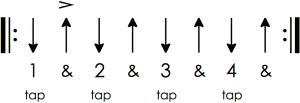
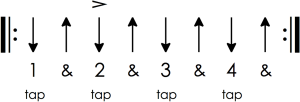
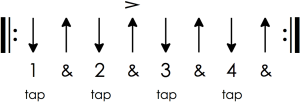
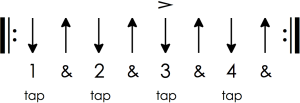
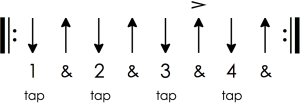
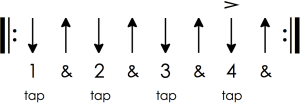
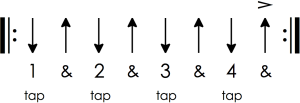
Every time you do it, spend at least two minutes (5 is better) strumming that pattern over & over again.
You want to feel the rhythm… feel your arm, feel your wrist, feel your pick hitting the strings. And most importantly, feel what it’s like to put an accent exactly where you want it.
That’s right… you’re in charge! You’re the boss, head honcho, the master of your strumming arm domain!
You show that accent who’s who! (or is it “whom”?)
Alright, everyone calm down now.
Stay focused.
The objective here is to teach your mind & body how to use dynamics in a controlled & deliberate manner. Because when it comes to real life (we’re in the laboratory at the moment, ya know), you want to be able to let go and just play naturally & freely.
But have you thought about what that really means?
(uh oh… he’s going to launch into one of his speeches, I just know it)
I’ve said (written) time & time again that in order to play music without thinking about it, you have to begin with… thinking about it.
It’s all about developing solid musicianship skills… as in, thinking about what your are doing. You are essentially programming you mind & body so that it can respond instinctually to the music in the moment.
That’s how athletes train. That’s how we speak, how we type, how we drive, how we do anything we do where we don’t want to have to concentrate on every little action & movement & thought.
I get it… practicing straight dry simple exercises like this can be less than stimulating. But I guarantee you, if you start off your musical path with just the “going for it & using the force & closing your eyes & putting your foot on the monitor & jamming to the gods”, you might create totally great art. I’ve seen many people do it. But more often I’ve seen many moments during a performance where the person is not in control of their musicianship skills, and subsequently less-than-high-art ensues.
Okay.
Speech over.
Now how about putting multiple accents into the equation, I mean, strum pattern?
There are many possibilities, like putting an accent on the the down strum on beat 2 and on the up strum of the “&” of beat 3.
I could go on & on.
But I won’t.
You will.
That’s correct. You heard me.
I want you to experiment with putting two or three or four or more accents anywhere you want to.
(but I suggest you stop experimenting when you get to eight accents)
And I would suggest you be organized with your experimentation. There is a systematic approach to be had here. And writing them out as you go would help you keep track of your experiments.
But, by all means, just go for it & strum away, if you want to. This is art, you know!
One quick last thing… maybe you should exaggerate the accented strums at first, just so you get the experience of a distinct change in volume. I notice that people in their formative stages of developing their strumming technique tend to be a little on the wimpy side when they go to accent.
Since you’re the one doing the accent, you know where it is… but does your audience?
So carve out some quality time for guitar practice, take each pattern and hang out with it for a few minutes each.
And then we’ll take it to the next level in a future article.
And after that, we’ll have the discussion about your stage presence.
Because apparently, putting your foot on the monitor while rocking your guitar is still an effective move to do.
Did you know?…
The 99 Decisions Guitar Program has an extensive study of the art & science of strumming the guitar.
Get your FREE trial here.

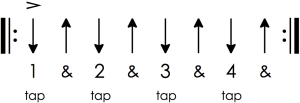
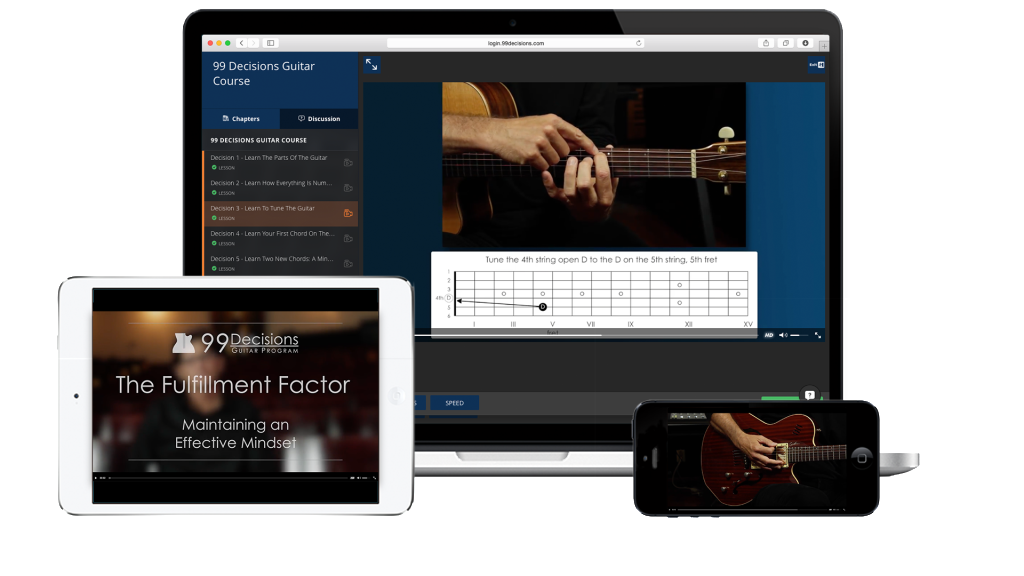
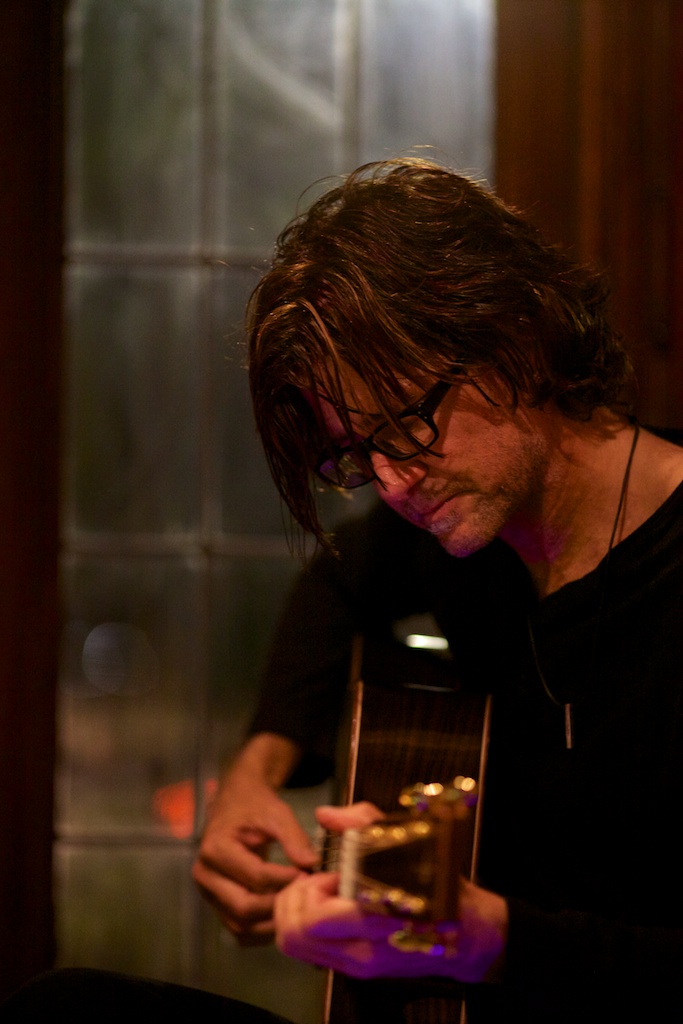
Leave A Response